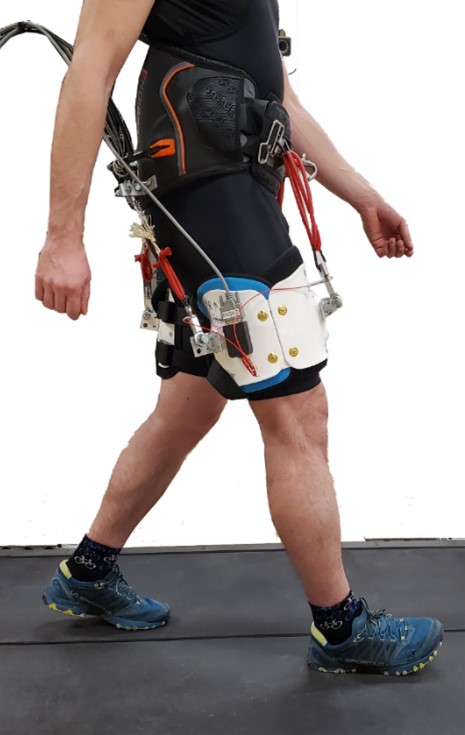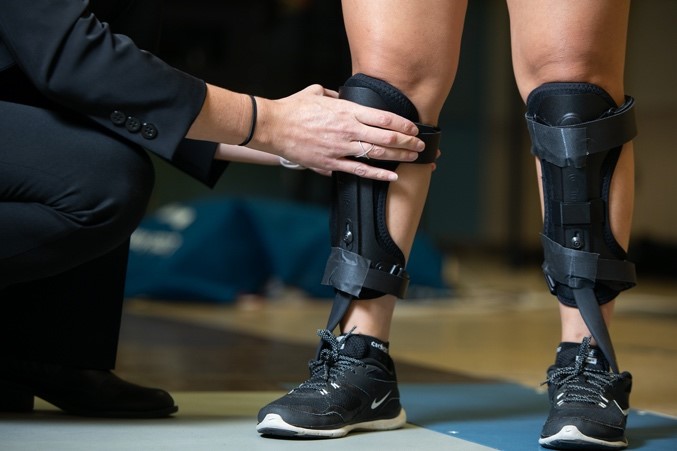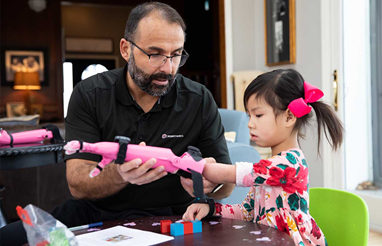Exoskeleton optimization for reducing gait variability in patients with peripheral artery disease

Collaborators: Dr. Iraklis Pipinos, Dr. Sara Myers
Graduate Assistants: Arash M. Gonabadi, Kayla Kowalczyk
Project Description: Wearable robots such as exoskeletons in development at UNO and other universities can reduce the metabolic cost of walking. Fine-tuning the controls of an exoskeleton for an individual typically requires up to one hour of walking experiments. However, patient populations such as patients with peripheral artery disease typically cannot walk longer than a few minutes because of muscle pain; therefore, it is challenging to optimize exoskeletons for the patient populations that could benefit the most from these devices. As part of this project, Malcolm and his team aim to develop faster and thereby more clinically feasible methods for optimizing a hip exoskeleton.
Improving Mobility in Peripheral Artery Disease Using an Ankle Foot Orthosis

Collaborators: Dr. Iraklis Pipinos, Dr. Jason Johanning, Dr. Danae Dinkel, Dr. Jianghu Dong, Dr. Kendra Schmid, Dr. Fadi AlSaleem, Dr. Basheer Qolomany, Adam Jacobsen
Research Associates: Dr. Hafizur Rahman
Research Technologists: Mahdi Hassan
Graduate Assistants: Ayisha Bashir, SeyedehZahra Salamifar
Project Description: Peripheral artery disease (PAD) is a manifestation of systemic atherosclerosis, characterized by atherosclerotic blockages of the arteries supplying the legs. Claudication, defined as walking induced gait dysfunction and muscle pain, is the most common manifestation of PAD. An ankle-foot orthosis (AFO) is a device made of carbon-composite material that can offset ankle plantarflexor torque and power and decrease blood flow demand and muscular stress during walking. The spring-like properties of carbon composite AFOs allow energy storage at weight acceptance and return at the point of toe off. Our pilot work has shown that walking with an AFO immediately increases the initial and absolute walking distances in patients with PAD as much as pharmacotherapy for six months. This study will determine whether an AFO improves walking performance in patients with PAD from its first use.
The influence of 3D printed prostheses on neural activation patterns of children

Collaborators: Dr. Brian Knarr, Jean Peck OTL/CHT, Rakesh Srivastava MS CPO, Dr. Stefania Fatone, and Dr. Ted Huppert
Research Associates: Dr. Jordan Borrell
Graduate Assistants: David Salazar, Chris Copeland, Claudia Cortes Reyes, Kaitlin Fraser
Project description: The neural basis underlying motor performance in children using a prosthesis has been severely understudied resulting in minimal empirical evidence. The use of functional near-infrared spectroscopy (fNIRS) in conjunction with customized and visually appealing 3D printed prostheses would provide the unique opportunity to quantitatively assess the influence of upper-limb prostheses in the neural activation patterns of the primary motor cortex and motor performance of children. This information would increase our limited knowledge of how prosthesis usage influences the primary motor cortex of growing children and use this information to develop rehabilitation programs aimed at reducing prosthesis rejection and abandonment.